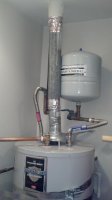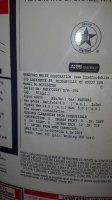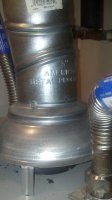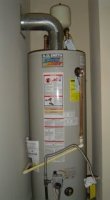ed5cgs
New Member
- Messages
- 5
- Reaction score
- 0
- Points
- 1
We recently had a 25 year old 50 gallon gas water heater replaced with a Bradford White with a direct vent. The water heater is in the laundry room which is about a 8 x 8 room inside the house. What we are now noticing that when the laundry room is closed, that room gets really hot. The source of the heat is the water heater (no laundry had run and the room heated) as it heats water. When I touch the vent, it's really hot. The vent appears to be about 4" in diameter. Do the newer water heaters run that hot now?
Is there a way to keep this cool ? Do I need add a vent?
Is there a way to keep this cool ? Do I need add a vent?




